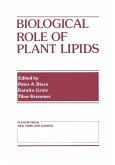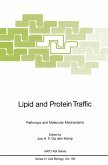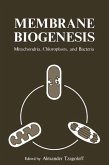Vladimir P. Skulachev
Membrane Bioenergetics (eBook, PDF)
73,95 €
73,95 €
inkl. MwSt.
Sofort per Download lieferbar

37 °P sammeln
73,95 €
Als Download kaufen

73,95 €
inkl. MwSt.
Sofort per Download lieferbar

37 °P sammeln
Jetzt verschenken
Alle Infos zum eBook verschenken
73,95 €
inkl. MwSt.
Sofort per Download lieferbar
Alle Infos zum eBook verschenken

37 °P sammeln
Vladimir P. Skulachev
Membrane Bioenergetics (eBook, PDF)
- Format: PDF
- Merkliste
- Auf die Merkliste
- Bewerten Bewerten
- Teilen
- Produkt teilen
- Produkterinnerung
- Produkterinnerung

Bitte loggen Sie sich zunächst in Ihr Kundenkonto ein oder registrieren Sie sich bei
bücher.de, um das eBook-Abo tolino select nutzen zu können.
Hier können Sie sich einloggen
Hier können Sie sich einloggen
Sie sind bereits eingeloggt. Klicken Sie auf 2. tolino select Abo, um fortzufahren.

Bitte loggen Sie sich zunächst in Ihr Kundenkonto ein oder registrieren Sie sich bei bücher.de, um das eBook-Abo tolino select nutzen zu können.
Membrane bioenergetics is one of the most rapidly growing areas within physico-chemical biology. Main aspects treated in this book include energy conservation and utilization by membrane-linked molecular mechanisms such as intracellular respiration, photosynthesis, transport phenomena, rotation of bacterial flagella, and the regulation of heat production.
- Geräte: PC
- ohne Kopierschutz
- eBook Hilfe
- Größe: 75.01MB
Andere Kunden interessierten sich auch für
![Biomembranes (eBook, PDF) Biomembranes (eBook, PDF)]() Lionel A. MansonBiomembranes (eBook, PDF)40,95 €
Lionel A. MansonBiomembranes (eBook, PDF)40,95 €![Membrane Structure and Mechanisms of Biological Energy Transduction (eBook, PDF) Membrane Structure and Mechanisms of Biological Energy Transduction (eBook, PDF)]() Membrane Structure and Mechanisms of Biological Energy Transduction (eBook, PDF)40,95 €
Membrane Structure and Mechanisms of Biological Energy Transduction (eBook, PDF)40,95 €![Membrane Fluidity (eBook, PDF) Membrane Fluidity (eBook, PDF)]() Membrane Fluidity (eBook, PDF)40,95 €
Membrane Fluidity (eBook, PDF)40,95 €![Molecular Structure, Function, and Assembly of the ATP Synthases (eBook, PDF) Molecular Structure, Function, and Assembly of the ATP Synthases (eBook, PDF)]() Sangkot MarzukiMolecular Structure, Function, and Assembly of the ATP Synthases (eBook, PDF)40,95 €
Sangkot MarzukiMolecular Structure, Function, and Assembly of the ATP Synthases (eBook, PDF)40,95 €![Biological Role of Plant Lipids (eBook, PDF) Biological Role of Plant Lipids (eBook, PDF)]() Biological Role of Plant Lipids (eBook, PDF)73,95 €
Biological Role of Plant Lipids (eBook, PDF)73,95 €![Lipid and Protein Traffic (eBook, PDF) Lipid and Protein Traffic (eBook, PDF)]() Lipid and Protein Traffic (eBook, PDF)40,95 €
Lipid and Protein Traffic (eBook, PDF)40,95 €![Membrane Biogenesis (eBook, PDF) Membrane Biogenesis (eBook, PDF)]() Membrane Biogenesis (eBook, PDF)73,95 €
Membrane Biogenesis (eBook, PDF)73,95 €-
-
-
Membrane bioenergetics is one of the most rapidly growing areas within physico-chemical biology. Main aspects treated in this book include energy conservation and utilization by membrane-linked molecular mechanisms such as intracellular respiration, photosynthesis, transport phenomena, rotation of bacterial flagella, and the regulation of heat production.
Dieser Download kann aus rechtlichen Gründen nur mit Rechnungsadresse in A, B, BG, CY, CZ, D, DK, EW, E, FIN, F, GR, HR, H, IRL, I, LT, L, LR, M, NL, PL, P, R, S, SLO, SK ausgeliefert werden.
Produktdetails
- Produktdetails
- Verlag: Springer Berlin Heidelberg
- Seitenzahl: 442
- Erscheinungstermin: 11. November 2013
- Englisch
- ISBN-13: 9783642729782
- Artikelnr.: 53144618
- Verlag: Springer Berlin Heidelberg
- Seitenzahl: 442
- Erscheinungstermin: 11. November 2013
- Englisch
- ISBN-13: 9783642729782
- Artikelnr.: 53144618
- Herstellerkennzeichnung Die Herstellerinformationen sind derzeit nicht verfügbar.
1 Introduction.- 1.1 A "Biology Building" and the Place of Bioenergetics.- 1.2 Essential Definitions.- 1.3 ??¯H, ?p, ??¯Na and ?s.- 1.4 Adenosine Triphosphate.- 1.5 Membrane Lipids.- 1.6 Lipid Bilayer.- 1.7 Membrane Proteins.- 2 Specific Methods of Membrane Bioenergetics.- 2.1 Membrane Potential Measurement.- 2.2 ?pH Measurement.- 2.3 Measurement of Fast H+ Dissociation-Association.- 3 Primary ??¯H Generators.- 3.1 The Cyclic Photoredox Chain of Purple Bacteria.- 3.2 The Non-Cyclic Photoredox Chain of Green Bacteria.- 3.3 The Non-Cyclic Photoredox Chain of Chloroplasts and Cyanobacteria.- 3.4 The Respiratory Chain.- 3.5 Bacteriorhodopsin.- 3.6 Primary ??¯H Generators: Overview.- 4 Secondary ??¯H Generators: H+-ATPases.- 4.1 Definition and Classification.- 4.2 H+-ATPasesof Obligate Anaerobic Bacteria.- 4.3 H+-ATPase of the Plant and Fungal Outer Cell Membrane.- 4.4 H+-ATPase of Tonoplast.- 4.5 Non-Mitochondrial H+-ATPase in Animal Cells.- 4.6 Interrelation of Various Functions of H+-ATPase.- 5 ??¯H Consumers.- 5.1 ??¯H-Driven Chemical Work.- 5.2 ??¯H-Driven Osmotic Work.- 5.3 ??¯H-Driven Mechanical Work: Bacterial Motility.- 5.4 ??¯H as an Energy Source for Heat Production.- 6 ??¯H Regulation, Transmission and Buffering.- 6.1 Regulation of ??¯H.- 6.2 ??¯H Transmission.- 6.3 ??¯H Buffering.- 7 The Sodium World.- 7.1 ??¯Na Generators.- 7.2 Utilization of ??¯Na Produced by Primary ??¯Na Generators.- 7.3 How Often is the Na+ Cycle Used by Living Cells?.- 7.4 Probable Evolutionary Relationships of the Protonic and Sodium Worlds.- 7.5 Na+/H+ Antiport in the Animal Cell: H+ as a Secondary Messenger.- 7.6 A General Scheme of Interrelations of Protonic and Sodium Cycles.- 7.7 Membrane-Linked Energy Transductions whenNeither H+ nor Na+ is Involved.- 8 Membrane Bioenergetics Studies: An Outlook.- 8.1 Some Prospects for Fundamental Research.- 8.2 Towards Applied Membrane Bioenergetics.- 9 Membrane Bioenergetics: A Look into History.- 9.1 The First Ideas and Observations. Chemiosmotic Hypothesis.- 9.2 Uncouplers.- 9.3 ??¯H Across Natural Membranes.- 9.4 ??¯H Across Reconstituted Membranes.- 9.5 ATP Formation Supported by an Artifically Imposed ??¯H.- 9.6 Bacteriorhodopsin and Chimerical Proteoliposomes.- 9.7 The Latest History.- 9.8 Membrane Bioenergeticists and Their Outstanding Predecessors.- 10 References.- 11 Subject Index.
1 Introduction.- 1.1 A "Biology Building" and the Place of Bioenergetics.- 1.2 Essential Definitions.- 1.3 ??¯H, ?p, ??¯Na and ?s.- 1.4 Adenosine Triphosphate.- 1.5 Membrane Lipids.- 1.6 Lipid Bilayer.- 1.7 Membrane Proteins.- 2 Specific Methods of Membrane Bioenergetics.- 2.1 Membrane Potential Measurement.- 2.2 ?pH Measurement.- 2.3 Measurement of Fast H+ Dissociation-Association.- 3 Primary ??¯H Generators.- 3.1 The Cyclic Photoredox Chain of Purple Bacteria.- 3.2 The Non-Cyclic Photoredox Chain of Green Bacteria.- 3.3 The Non-Cyclic Photoredox Chain of Chloroplasts and Cyanobacteria.- 3.4 The Respiratory Chain.- 3.5 Bacteriorhodopsin.- 3.6 Primary ??¯H Generators: Overview.- 4 Secondary ??¯H Generators: H+-ATPases.- 4.1 Definition and Classification.- 4.2 H+-ATPasesof Obligate Anaerobic Bacteria.- 4.3 H+-ATPase of the Plant and Fungal Outer Cell Membrane.- 4.4 H+-ATPase of Tonoplast.- 4.5 Non-Mitochondrial H+-ATPase in Animal Cells.- 4.6 Interrelation of Various Functions of H+-ATPase.- 5 ??¯H Consumers.- 5.1 ??¯H-Driven Chemical Work.- 5.2 ??¯H-Driven Osmotic Work.- 5.3 ??¯H-Driven Mechanical Work: Bacterial Motility.- 5.4 ??¯H as an Energy Source for Heat Production.- 6 ??¯H Regulation, Transmission and Buffering.- 6.1 Regulation of ??¯H.- 6.2 ??¯H Transmission.- 6.3 ??¯H Buffering.- 7 The Sodium World.- 7.1 ??¯Na Generators.- 7.2 Utilization of ??¯Na Produced by Primary ??¯Na Generators.- 7.3 How Often is the Na+ Cycle Used by Living Cells?.- 7.4 Probable Evolutionary Relationships of the Protonic and Sodium Worlds.- 7.5 Na+/H+ Antiport in the Animal Cell: H+ as a Secondary Messenger.- 7.6 A General Scheme of Interrelations of Protonic and Sodium Cycles.- 7.7 Membrane-Linked Energy Transductions whenNeither H+ nor Na+ is Involved.- 8 Membrane Bioenergetics Studies: An Outlook.- 8.1 Some Prospects for Fundamental Research.- 8.2 Towards Applied Membrane Bioenergetics.- 9 Membrane Bioenergetics: A Look into History.- 9.1 The First Ideas and Observations. Chemiosmotic Hypothesis.- 9.2 Uncouplers.- 9.3 ??¯H Across Natural Membranes.- 9.4 ??¯H Across Reconstituted Membranes.- 9.5 ATP Formation Supported by an Artifically Imposed ??¯H.- 9.6 Bacteriorhodopsin and Chimerical Proteoliposomes.- 9.7 The Latest History.- 9.8 Membrane Bioenergeticists and Their Outstanding Predecessors.- 10 References.- 11 Subject Index.







